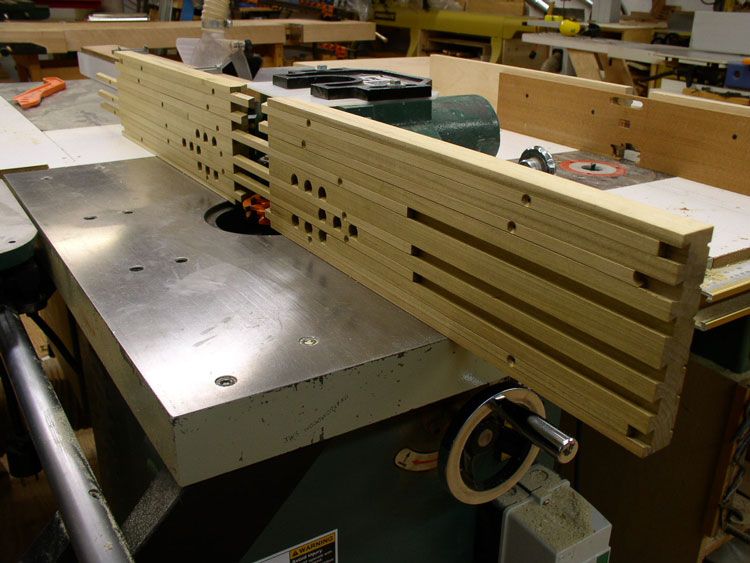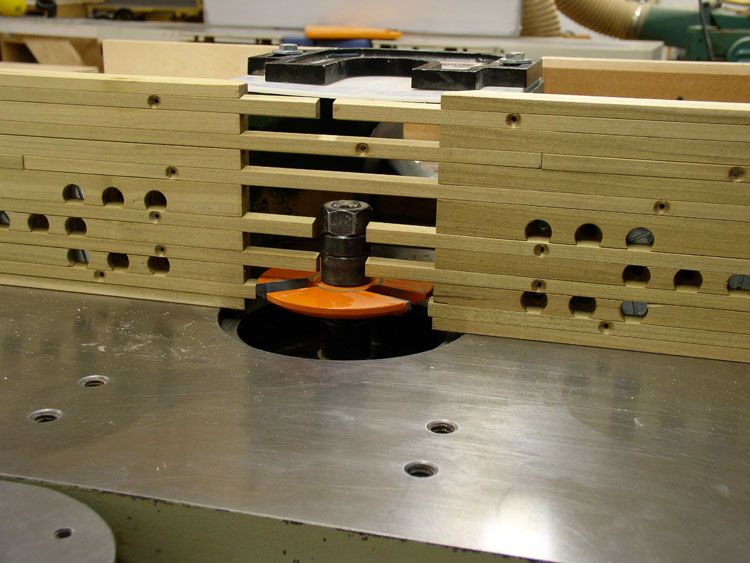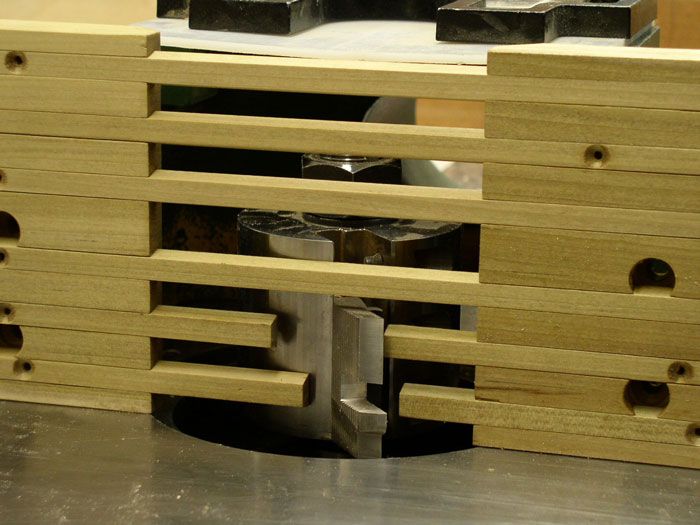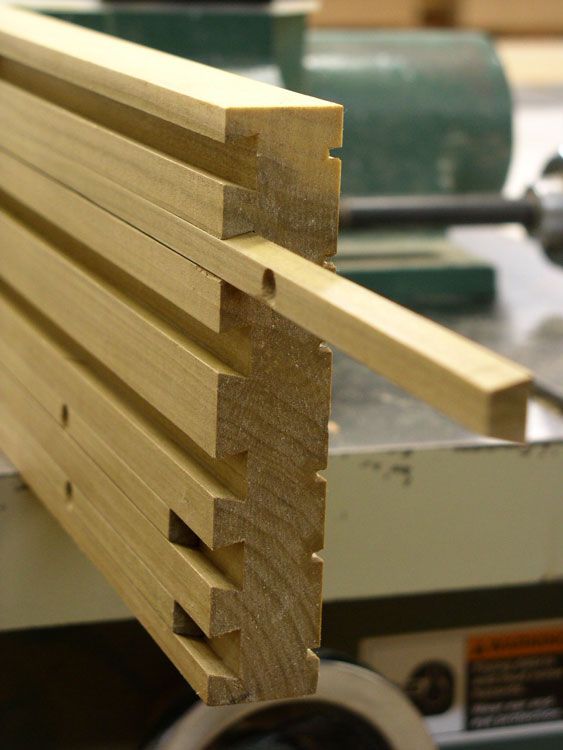Question
Here are some pictures of a shaper fence I made yesterday that is modeled after the Felder design. I liked the idea of having sliding gibs flush with the main fence that could act as a close tolerance fence. The gibs move anywhere along both main fences and can be secured with small drawer slide screws. The bolts which fasten the wood fence to the cast fence are recessed below the dovetailed ways.




Forum Responses
(Solid Wood Machining Forum)
From contributor A:
Very nice fence. Looks like a bit of work. We have always used sub fences made from mahogany. We cut a steep bevel on the business end. There's plenty of motion in the stock fence to keep driving it into the cutter head numerous times. Every once in awhile we replace it. In the event we need plenty of support everywhere, we tack a piece of 1/2" ply to the mahogany and bury the cutter into it.
That is a beautiful fence.
I typically add auxiliary fences to my shapers, the same as I do for router tables. They allow me to bury the cutter into the fence for zero clearance. I use a t-slot cutter to mill a slot into the back of the fence to allow it to slide back and forth.
Should be pretty easy to add the post mounts for the Aigner thickness stop if you ever need to. Some of the small parts from Aigner are reasonably priced if you look at the prices on Simantechinc. The Martin site lists suggested retail prices.
Felder and the Panhans safety catalogue offer a DIY fence bar kit for about 140 dollars that works on wooden fences. They also offer aluminum fence plates that will capture a wood zero clearance fence in a similar fashion but not as quick as the Aigner. The DIY bars adjust up and down, which is a desired feature of this type fence. These fences work best with the larger diameter Euro tooling.
As to sizing the bars, yes, I undersized the bars ever so slightly to allow movement but not rattle. Having the infeed and outfeed fences perfectly aligned also allows the bars to span across the full opening and be secured to both in and out fences (should the profile allow for this). To lessen the movement of the wood itself, I put two coats sealcoat on the fences as well as the bars, then waxed all.
I have a couple jobs coming up which will test the metal of this system.